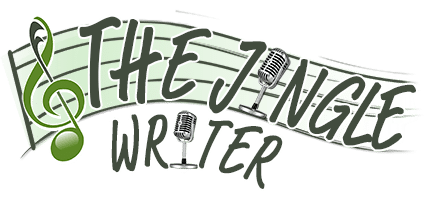Using custom jingles in advertising has been a common practice for decades. A catchy tune that resonates with consumers can leave a lasting impression and increase brand recognition. However, creating a custom jingle is only the first step in an effective marketing strategy. Measuring the effectiveness of your custom jingle is crucial to determine whether it’s achieving your desired goals and objectives.
In this article, we will explore various methods to measure the effectiveness of your custom jingle. From analyzing website traffic, conducting customer surveys, monitoring social media engagement, and evaluating business results, each plan offers unique insights into how well your custom jingle resonates with your target audience.
By understanding these metrics, businesses can make informed decisions about their marketing strategies and optimize their efforts toward achieving their goals.
Define Your Goals and Objectives
The section aims to establish clear and measurable goals and objectives for the jingle’s creation, thereby enabling a comprehensive evaluation of its impact on the target audience.
One of the primary goals could be to increase brand recognition by using a catchy tune that sticks in people’s minds long after they’ve heard it. This objective can be measured by conducting surveys or focus groups to determine how many people know your brand after hearing the jingle.
Another goal could be to improve advertising recall among potential customers, which can be achieved by incorporating key messaging into the lyrics or melody of the jingle. To measure this objective, you can conduct online surveys asking participants to recall specific details from your advertisement.
To effectively measure your custom jingle’s effectiveness, it is essential to analyze website traffic and other online metrics such as social media engagement rates and search engine ranking changes. Through monitoring these data points, you can determine whether there has been an uptick in website visits or social media interactions after airing your jingle.
By analyzing these metrics alongside survey responses from customers who have heard your jingle, you can see its success in achieving your established goals and objectives.
Analyze Website Traffic
By scrutinizing the influx of website visitors, one can gauge the impact of their melodic composition on potential consumers.
Conversion rates and user behavior are two key metrics to analyze when measuring the effectiveness of a custom jingle. Conversion rates refer to the percentage of website visitors who take a desired action, such as purchasing or filling out a contact form. Businesses can determine if the melody has positively influenced consumer behavior by comparing conversion rates before and after implementing a custom jingle.
In addition to conversion rates, analyzing user behavior can provide valuable insights into how consumers interact with a business’s website. For example, if website visitors spend more time on pages where the custom jingle is prominently featured, they may find it memorable or enjoyable. On the other hand, if users quickly navigate away from pages featuring the song, it may suggest that they find it annoying or distracting.
By examining conversion rates and user behavior, businesses can better understand how their custom jingle resonates with potential customers and make informed decisions about its future use.
Conducting customer surveys is an effective way to understand customer perception towards your jingle composition further.
Conduct Customer Surveys
To gain a more comprehensive understanding of how customers perceive a business’s melodic composition, conducting surveys can provide valuable insights into consumer opinion.
Survey methodology involves designing specific and measurable questions, allowing for accurate data collection and analysis.
It is essential to consider the target audience when creating survey questions, ensuring they are relevant and easy to understand.
Response rate analysis is another crucial aspect of surveying consumers.
A low response rate may indicate a lack of interest or engagement with the jingle, while a high response rate provides more reliable data.
By analyzing survey results, businesses can make informed decisions about their custom jingles and make necessary adjustments to improve their effectiveness.
Next, we will explore how monitoring social media engagement can further enhance the understanding of customer perception towards a business’s custom jingle.
Monitor Social Media Engagement
Monitoring social media engagement can provide valuable insights into consumer perception of a business’s melodic composition, allowing for an enhanced understanding of its impact on the target audience.
For example, analyzing the comments and shares on a company’s social media posts featuring its custom jingle can reveal how customers engage with the brand and its musical branding efforts.
Hashtag tracking is another way to monitor social media engagement, which involves creating unique hashtags for marketing campaigns and tracking their usage by consumers on different platforms. This allows businesses to track conversations about their jingle and measure its reach among broader audiences.
In addition, influencer partnerships can also be used as a tool to monitor social media engagement toward a business’s custom jingle. Influencers with large followings who create content featuring the song can provide valuable feedback from their followers on how they perceive the music about the brand.
The influencers’ comments and reactions from their followers can indicate whether or not the jingle resonates with its intended audience. By monitoring these interactions closely, businesses can gain insights into what aspects of their jingle work well and what areas need improvement to enhance customer engagement further.
Ultimately, this information will help businesses make informed decisions when evaluating business results related to their musical branding efforts.
Evaluate Business Results
The evaluation of business results about musical branding efforts can provide organizations with a comprehensive understanding of the impact of their melodic composition on consumer behavior and perception. Conversion rates and sales figures are two key metrics businesses can use to assess the effectiveness of their custom jingle. By comparing these metrics before and after the implementation of the song, companies can determine whether or not it has positively impacted their bottom line.
Companies can conduct surveys or focus groups to evaluate business results further to gather customer feedback about their brand perception and recall. This information can provide valuable insights into how well the jingle resonates with its intended audience and if any adjustments need to be made. Additionally, analyzing website traffic data, call center volume, and customer retention rates may also offer insight into the effectiveness of a custom jingle in driving consumer engagement and loyalty.
Frequently Asked Questions
Can I use the same jingle for different products or services?
According to a recent study, 68% of consumers can recall a jingle from memory after hearing it just once. This highlights the power and potential of jingles as marketing tools.
Regarding reusability options and versatility considerations, using the same jingle for different products or services is possible but may not be the most effective strategy. While creating a new song for each product/service may save time and resources, it risks diluting the brand identity and confusing consumers.
Before reusing it, it is essential to consider whether the existing jingle aligns with the new product/service’s values and messaging. Ultimately, careful consideration should be given to determine whether a current song will effectively communicate your message without sacrificing brand recognition or clarity.
How can I ensure that my jingle resonates with my target audience?
When creating a custom jingle, it is crucial to consider the musical composition and how it will resonate with your target demographics. The melody, rhythm, and lyrics should be carefully crafted to communicate your brand’s message effectively.
To ensure that your jingle resonates with your target audience, it is essential to conduct thorough research on their music preferences and attitudes toward advertising. This information can guide the creative process toward a memorable and emotionally appealing jingle.
Testing the jingle with focus groups or surveys can provide valuable feedback on its effectiveness in connecting with your target demographic. Ultimately, a successful custom jingle should create a sense of belonging among consumers while effectively communicating your brand’s message.
Should I use a professional singer or voice actor for my jingle?
When creating a jingle, one crucial decision is to use a professional singer or voice actor. Each option has its pros and cons.
A professional singer can bring a unique tone and style to the jingle, which can help it stand out and be more memorable for the audience. However, hiring a singer can be much more expensive than using a voice actor.
On the other hand, a voice actor may not have the same vocal range as a trained singer, but they often come at a lower cost and can still deliver a compelling performance. When considering a cost comparison between these two options, it’s essential not to overlook the potential impact each choice could have on your brand image and marketing efforts.
Ultimately, deciding whether to use a professional singer or voice actor will depend on your specific goals for the jingle and what you are willing to invest to achieve those goals.
How do I measure the impact of my jingle on brand awareness?
Measuring the impact of a custom jingle on brand recognition is an essential step toward evaluating the effectiveness of a marketing campaign. Establishing clear metrics that can help quantify how much the song resonates with consumers and contributes to increased brand awareness is crucial.
One effective way to measure this impact is by conducting surveys or focus groups that assess consumer recall rates and brand association after exposure to the jingle. Another approach could be analyzing website traffic, social media engagement, and sales data before and after airing the song.
Ultimately, measuring the impact of a custom jingle requires a data-driven and creative approach that accounts for various factors that may influence consumer behavior.
Is there a specific time frame in which I should evaluate the effectiveness of my jingle?
When evaluating the effectiveness of a custom jingle, it is essential to consider the long-term impact and the importance of consistency.
The evaluation process should not be limited to a specific time frame, as the true success of a jingle can only be determined over an extended period.
To accurately measure its effectiveness, one must pay close attention to how well it aligns with brand messaging and whether or not it resonates with target audiences.
Additionally, consistency in using the jingle across various channels is crucial for building consumer familiarity and recognition.
A comprehensive analysis should also consider any changes in brand awareness or perception that may have occurred due to implementing the jingle.
By considering these factors, marketers can gain valuable insights into how their custom jingles impact their audience and ultimately drive business results.
Conclusion
The effectiveness of a custom jingle can be determined by measuring its impact on various aspects of the business. Defining the goals and objectives the song is expected to achieve is essential.
Analyzing website traffic, conducting customer surveys, monitoring social media engagement, and evaluating business results are some methods that can help measure a jingle’s effectiveness.
For instance, a company recently launched a new product with a catchy jingle in its advertisement campaign. The company aimed to increase brand awareness and sales through its online platform.
After analyzing website traffic data, customer surveys, social media engagement metrics, and business results over several weeks, they found that the jingle had significantly impacted. The website traffic increased by 30%; customer survey responses indicated higher recall rates for the brand name and product features among those who heard the jingle than those who did not. Social media engagement also increased, with more shares and comments on posts featuring the song.
In conclusion, measurable parameters like website traffic analytics, customer surveys, social media engagement metrics, and clear goals can help accurately assess your custom jingle’s effectiveness. A custom jingle anchors your brand identity while evoking customers’ positive emotions, improving business outcomes.
Like any musical composition or melody, it has different notes in harmony, creating something beautiful together; combining marketing strategies like content creation with music can make something unique that customers will remember long after it stops playing.


Recent Comments